The Media and the Models of
Masculinity
The Media and the Models of
Masculinity
Mark Moss

Published by Lexington Books
A division of Rowman & Littlefield Publishers, Inc.
A wholly owned subsidiary of The Rowman & Littlefield Publishing Group, Inc. 4501 Forbes Boulevard, Suite 200, Lanham, Maryland 20706
www.lexingtonbooks.com
Estover Road, Plymouth PL6 7PY, United Kingdom
Copyright 2011 by Lexington Books
All rights reserved. No part of this book may be reproduced in any form or by any electronic or mechanical means, including information storage and retrieval systems, without written permission from the publisher, except by a reviewer who may quote passages in a review.
British Library Cataloguing in Publication Information Available
Library of Congress Cataloging-in-Publication Data
Moss, Mark Howard, 1962
The media and the models of masculinity / Mark Moss.
p. cm.
Includes bibliographical references and index.
ISBN 978-0-7391-6625-3 (cloth : alk. paper)ISBN 978-0-7391-6627-7 (electronic)
1. Men in mass media. 2. Masculinity. 3. MenIdentity. I. Title.
P94.5.M44M67 2011
 The paper used in this publication meets the minimum requirements of American National Standard for Information SciencesPermanence of Paper for Printed Library Materials, ANSI/NISO Z39.48-1992.
The paper used in this publication meets the minimum requirements of American National Standard for Information SciencesPermanence of Paper for Printed Library Materials, ANSI/NISO Z39.48-1992.
Printed in the United States of America
This book is dedicated
to the memory of my father,
William Moss
Contents
Preface
A number of years ago I was having my car serviced and in the waiting room there was a magazine with David Brooks The Return of the Pig folded over. The article, which detailed the rise or rebirth of boorish behavior in men, was amusing and accurate. I chuckled at what Brooks had written and thought about the various ways that the media had portrayed men. There were numerous versions to think about. I put the ideas away and walked to a bookstore not far from the service center. At the bookstore I noticed a number of books targeted toward boys, in particular, The Dangerous Book for Boys, and similarly titled offerings. Again, I began to think about concepts that structured and defined a mediated version of masculinity. Those ideas have come to the fore in the following pages. Yet they have been tempered and molded over the past few years by viewing and reading about the nature of contemporary masculinity as defined by the media.
In the summer of 2009, it seemed that every newspaper, Website, and magazine featured an article about the upcoming season of Mad Men. The Matthew Weinerproduced, and oftenwritten, drama, airing on various cable stations but originating in the United States on AMC, was a throwback look at the workings of an advertising agency in the late 1950s and early 1960s. Glaringly, it put the spotlight on a variety of politically incorrect practices that seemed to pervade the office environment of the times: drinking, smoking, and sexual harassment being the main attractions. The story lines were intriguing, crisply written, intelligent, and very appealing to a select audience. In one sense it was television at its bestvery good watching. In another sense it highlighted extreme depictions of masculinity from a variety of angles. The Cary Grantlike sartorial polish and handsomeness of the main character, played by Jon Hamm; the sophisticated elegance of an era where men wore suits, ties, and hats seemed to appeal to many men and women who discussed the show on chat lines, blogs and, appropriately, at the water cooler. The shows fictional and historical associations are quite relevant to this work. It was during the 1950s that so much of what influenced mediated masculinity matured and morphed into the archetypes of today. From Hugh Hefner and the Kinsey studies to stylized icons, the 1950s, in fact and fiction, have come to exert an enormous influence on contemporary masculinity. This is why this work constantly references this era.
Add to Mad Men a slew of shows such as Entourage, Two and a Half Men, as well as movies as diverse as Sideways and The Last Samurai, the films of Guy Ritchie, experiments such as Queer Eye for the Straight Guy and Monster Garage, and what is presented is an eclectic array of media offerings that dictate the variety of ways a man can be deemed masculine and secondly, that reinforce the notion that the media is enormously powerful in conveying accepted and acceptable models of masculinity. The contrasts that the media present are significant and diverse; they range from the juice-head immaturity of the guys on The Jersey Shoreall very concerned about their appearanceto the chic gawkiness of the man/boys populating The Big Bang Theory.
At the turn of the twentieth-century most middle class men took as their models the roles that were played by successful men in business, sports, and government. Newspapers in particular, but books and magazines as well, provided templates of comparison and pictures of masculinity for men to aspire. Beyond that, most of the modeling came from men that they would have seen in person, on the street, or at work. The examples of masculine style and deportment were finely tuned and only few templates existed. A little over a hundred years later the offerings from the media were much more diverse and enormously fertile. No longer were the static guides confined to a few examples. The media has provided numerous examples for men to model themselves on and yet, despite this diversity most spring from a few key types.
Over the past thirty years a number of studies have appeared that focus on masculinityfrom a variety of perspectivesbut at no time has such intense a selection of media and multiplicity of content been available. From sophisticates to boors to laughable fathers, the assortment of masculine stereotypes available from all media is truly impressive. This book attempts to survey the models of masculinity presented by the media in its many different forms. It emphasizes the dominant and pervasive impact that the media have had upon defining and signifying masculine roles. There is a grand assortment of influences, some original and some derivative, which have inspired and influenced men over the past decades which cause men to act, dress, and literally be a particular kind of man.
The political evolution of men has waxed and waned over this same period. During times of enormous economic and personal distress, men have attempted to recapture places for themselves that tried to distinguish their place in a changing society. For those thrust out of jobs that have been a part of their culture and heritage, the blow has been particularly potent. For others, once king-of-the-world types, soul searching accompanies a series of retrenchments.
In a variety of cases men are responding to the various messages sent through marketing channels and embodied in the diverse portraits painted through characters on television, in film and peppered throughout the media. This work looks at this process.
Introduction
That said, I do have certain qualities consistent with metrosexuality, including a taste for expensive home furnishings, La Prairie skin products, and heirloom tomatoes. Its crazy, I know, but I prefer well-made objects to those of lesser quality. Go figure.
There may have been a day when men wore only white boxer shorts or whatever their wives or girlfriends or mothers bought for them. It is possible that at one time men simply didnt care about their underwear. Today, however, underwear is much more than a piece of underclothing; underwear is a consumerist symbol of masculinity just as lingerie is a consumerist symbol of femininity
Next page

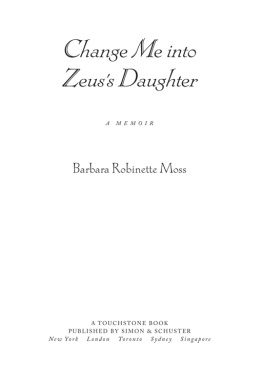

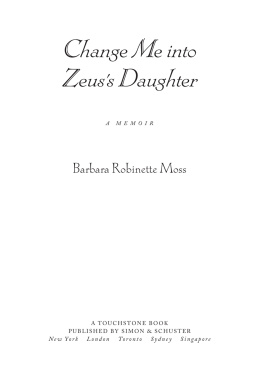
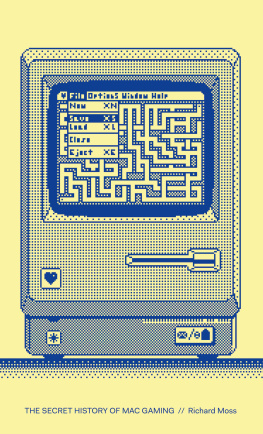
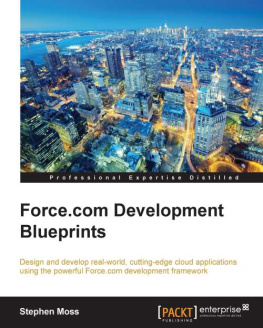
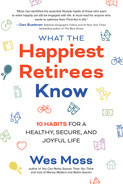
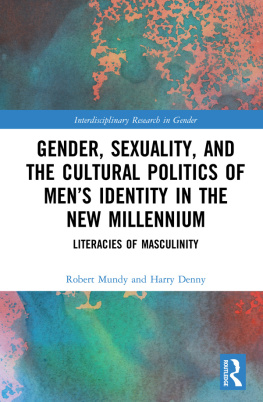



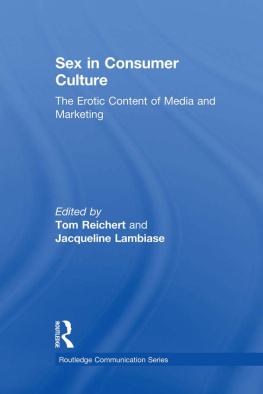

 The paper used in this publication meets the minimum requirements of American National Standard for Information SciencesPermanence of Paper for Printed Library Materials, ANSI/NISO Z39.48-1992.
The paper used in this publication meets the minimum requirements of American National Standard for Information SciencesPermanence of Paper for Printed Library Materials, ANSI/NISO Z39.48-1992.